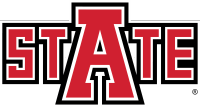Document Type
Book Chapter
Publication Title
Encyclopedia of Virtual Communities and Technologies
Abstract
With the escalating need for global and flexible interactions in an increasingly networked society, virtual communities as a new model are becoming important for virtual communication and collaboration. Virtual community refers to a group of people who interact socially for mutual benefits in a shared cyberspace, and a social network of relationships that provide information and a sense of belongings (de Moor & van den Heuvel, 2004; Schubert & Ginsburg, 2000). Schubert and Ginsburg (2000) describe virtual communities as the union between individuals or organizations who share common values and interests using electronic media to regularly communicate within a shared semantic space. From a technical perspective, the communicative and collaborative functionalities of virtual communities mostly consist of standard components, modules and tools (Ludwid & Kluber, 2003). These software components and functionalities increasingly come in a form of Web services discovered and invoked via the Internet (de Moor & van den Heuvel, 2004). Virtual community can be realized by using Web services to take advantage of the convergence of software technologies (e.g., distributed computing, object orientation, WWW) and network technologies (e.g., voice/data service, IP, Internet) (Muschamp, 2004). Web services are interesting for virtual communities, since they allow community members, even non-technical ones, to combine Web services in new value-adding applications (de Moor & van den Heuvel, 2004). In the following sections, we are going to discuss what Web services are, why Web services are important and where they are going. In addition, we look at Web service architecture, standards, advantages, development platforms and semantic Web.
First Page
578
Last Page
583
DOI
10.4018/978-1-59140-563-4.ch114
Publication Date
2006
ISBN
9781591405634
Recommended Citation
Zhang, Qingyu, "Web Services and Virtual Communities" (2006). Faculty Publications. 27.
https://arch.astate.edu/busn-isba-facpub/27


